![]()
Thursday, October 29, 2015 | By Dr. Raz Zimmt[1]
This study is originally published by The Meir Amit Intelligence and Terrorism Information Center. The study is structured in nine sections (see below), which if read in conjunction with each other, draws a complete picture of Major General Qasem Soleimani (Haj Qasem), commander of the Iranian Islamic Revolutionary Guards Corps’ Qods Force, instigator of Iranian Subversion and Terrorism in the Middle East and around the Globe.
Recent Iranian Involvement in Syria

Qasem Soleimani and the Mufti of Syria, Ahmad Badreddin Hassoun. The picture was posted to the social networks at the beginning of 2015 but its date is unknown.
The civil war in Syria that broke out in 2011 posed a serious challenge for Iran. If the Bashar Assad’s regime toppled it could herald Syria’s exit from the resistance camp as a strategic ally and weaken Iran’s regional status. It could also weaken Hezbollah in Lebanon (Iran’s most important and an effective proxy), because it would mean the loss of vital Syrian logistic support, necessary for the transfer of military support to the organization.
The rebels’ mounting military successes, a function of the continuing depletion of the Syrian regime’s resources, made it necessary for Iran to ramp up its support for the regime, whose control was becoming increasingly limited to vital areas (“Little Syria”). The military successes of ISIS, Al-Nusra Front and other rebel organizations, some of them supported by the United States, Turkey, Qatar and Saudi Arabia, raised doubts in Iran as to Assad’s ability to remain in power. Nevertheless, the increasing commitment of Iran and Hezbollah, then joined by Russia, have made it possible, so far, for the Syrian regime to survive.
Until recently, Iran’s involvement in Syria, like its involvement in Iraq, Lebanon, and Yemen, was carried out by proxies and Iranian advisors. Iran had so far not sent fighting units to Syria or other Arab countries. That recently changed when the Iranian IRGC joined the ground offensive in Syria. The Qods Force, commanded by Qasem Soleimani, has been in the forefront of Iran’s effort to prevent the fall of Damascus and other strategic strongholds, and the collapse of the Syrian regime. Iran provided Syria with weapons, strategic guidance and military advisors, and sent Hezbollah and Shi’ite foreign fighters (primarily from Iraq and Afghanistan) to active duty in Syrian territory. Beginning in 2012, the IRGC recruited several thousand Shi’ite volunteer fighters from among the Afghan refugees living in Iran, in return for a monthly salary and other benefits.
Cultivating Terrorist Networks in the Golan Heights
In addition to supporting the Syrian regime, Iran also supports the cultivation of terrorist networks in the Golan Heights to oppose Israel. It employs local networks operating in the Golan Heights that exploit the loss of the Syrian regime’s control over most of the region (and which for the most part is now under rebel control). The main local forces involved in establishing terrorist networks against Israel are Hezbollah operatives, Druze operatives linked to Samir Quntar and Palestinian Islamic Jihad (PIJ) operatives. Iran probably wants to cultivate the terrorist networks but not put them into operation against Israel immediately, because most of its attention is focused on protecting the survival of the Assad regime.
A reminder of the potential for terrorism from the Golan Heights came on August 20, 2015, when four rockets were fired at Israel from the Syrian controlled Golan Heights. Two hit Israeli territory in the Upper Galilee and two fell in the Golan Heights. It was the first rocket barrage from the Golan Heights attacking the Galilee Panhandle since the Yom Kippur War (October 1973). According to Israeli security sources, the rockets were launched by a PIJ squad directed by a high-ranking Iranian.
It was not the first Iranian footprint found among the terrorist networks trying to establish themselves in the Golan Heights. On January 18, 2015, a convoy of Hezbollah operatives was attacked in the northern Golan Heights, and Hezbollah accused Israel of responsibility. Among those killed were Jihad Mughnieh, the son of Imad Mughnieh, who had commanded Hezbollah in the northern Golan Heights. Among those killed was also Mohammad Allahdadi, a senior IRGC commander. His presence in the convoy might indicate his involvement in the activity of Hezbollah operatives who were attacked.
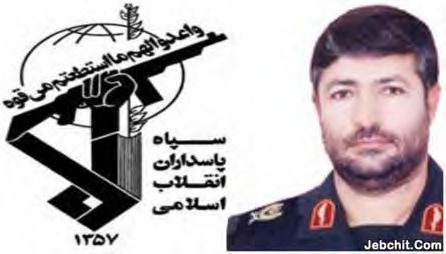
Mohammad Ali Allahdadi, senior IRGC officer, killed in the attack on January 18, 2015 (Jibshit website, January 19, 2015)
Despite the Qods Force’s significant involvement in Iran’s support for the Assad regime, there is not much information about Qasem Soleimani’s personal involvement in the events in Syria. Until recent months most of his attention was clearly directed towards Iraq. The Iraqi arena is high on the Iranian regime’s priority list because it has a large Shi’ite population, it is immediately important to the defense of Iran’s borders, and because of ISIS’s dramatic military successes there in the summer of 2014 (the conquest of Mosul and the declaration of the Islamic Caliphate).
However, there is no doubt about Soleimani’s personal involvement in IRGC activity in Syria, especially in directing the fighting and coordinating between the Syrian forces, the Hezbollah fighters and the Shi’ite foreign fighters in the various battle zones. According to John Maguire, formerly a CIA officer in Iraq, quoted by The New Yorker on September 30, 2013, it was Soleimani who led the successful offensive of Syrian regime supporters in May-June 2013, leading to Hezbollah’s retaking of the town of al-Qusayr on the Syrian-Lebanese border. According to the report, Soleimani ordered Hezbollah leader Hassan Nasrallah to dispatch more than 2,000 Hezbollah fighters to support the fighting.[4] In addition, Soleimani met with senior Syrian officials.
During the past two years the Arab media issued reports of sporadic visits paid by Soleimani to Syria. Sources affiliated with the Lebanese opposition claimed he was in the Aleppo region at the beginning of June 2014, where he formulated a plan to retake the city, parts of which had been occupied by the rebels. Putting the plan into operation was delayed, apparently by ISIS’s advance through Iraq, the fall of the city of Mosul to ISIS and the declaration of the Islamic Caliphate in June 2014; the plan was renewed in August 2014 (Now Lebanon website, December 11, 2015).
On October 7, 2015, with the participation of IRGC and Hezbollah fighters, and with Russian aerial support, the Syrian army began an offensive to cleanse the regions of Hama, Aleppo and Idlib. Its objective was to ward off the recent strategic threat to Latakia and the Syrian regime strongholds along the coast. The threat necessitated Soleimani’s increased personal involvement, in all probability to a great extent at the expense of his involvement in Iraq. At the beginning of June 2015 the Hezbollah-affiliated Lebanese website Al-Hadath reported that Soleimani had visited the fighting fronts in southern and western Syria to gain knowledge of the situation and formulate a strategy to curb the activities of the radical Sunni organizations. According to the report, he headed a delegation of senior military advisors from Iran and Hezbollah in Aleppo who went to the plain of Al-Ghab to examine the deployment of the Syrian army and find ways to halt the advance towards Latakia of Al-Nusra Front and its allies. Al-Hadath also reported that during the visit, Soleimani appointed a senior IRGC officer to command military advisors in Syria and represent him in everything related to conducting military affairs in Syria, in collaboration with Hezbollah and the Syrian army.[5]
In mid-September 2015, the Syrian regime’s predicament led Iran to increase the number of its forces in Syria, apparently by several thousand. The reinforcements, who were both IRGC operatives and Shi’ite foreign fighters from Afghanistan and Iraq, were sent to support the Syrian army in the ground offensive in the north. The Hezbollah-affiliated Lebanese newspaper Al-Akhbar reported that on October 11, 2015, Qasem Soleimani had arrived in northwestern Syria and commanded the Syrian army offensive with the support of the IRGC (Al-Akhbar, October 13, 2015).
Soleimani’s participation in commanding the offensive put him in the limelight. The social networks posted a video and pictures of him briefing Hezbollah fighters (apparently in the region of Latakia). His arrival in Syria with the Iranian reinforcements apparently indicates the Qods Force has switched its attention to there from Iraq. The strategic distress of the Syrian regime requires that the Qods Force, under Soleimani’s command, concentrate its efforts on repelling the rebels from northwestern Syria (the regions of Homs, Hama, Idlib and Aleppo) in collaboration with the Syrian army and Hezbollah, and with Russian aerial support (a pro-Assad coalition inside Syria which Soleimani plays a key role, operating in tandem with the American-led international coalition).
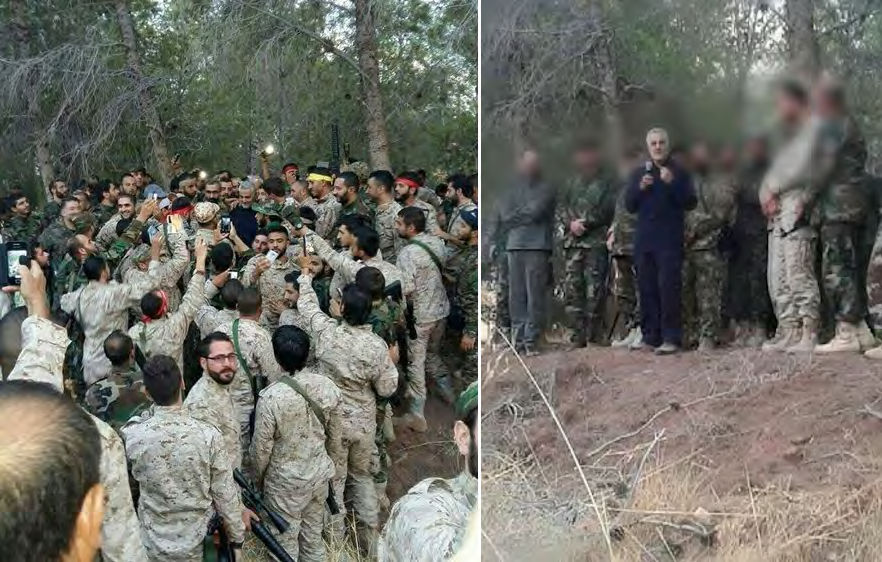
Qasem Soleimani briefs fighters, apparently in the region of Latakia, after the beginning of the Syrian army’s ground offense in northern Syria (Facebook, October 13, 2015).
So far, the Syrian army ground offensive in northwestern Syria has met with difficulties. Near the city of Al-Safira, south of Aleppo, ISIS and Al-Nusra Front made territorial gains and now threaten to take control of the rural areas south of the city (as of October 28, 2015). The IRGC fighters, stationed at the front of the attacking Syrian force, have suffered heavy losses (more than thirty dead since the beginning of the offensive, among them three senior officers with the rank of colonel and brigadier general). Hossein Salami, acting IRGC commander, has already been asked to explain the rise in Iranian losses. He reportedly said the IRGC had raised the “quantity and quality” of its advisory forces in Syria. He claimed it was sending in reinforcements that led to the rise in the number of Iranian dead, because, he said, “they cannot stay in closed rooms,” but had to go out into the field (ISNA, October 26, 2015).
Soleimani’s Public Position on the Syrian Issue
Like other senior Iranians, in his public statements Qasem Soleimani unequivocally adheres to Iran’s commitment to support the Syrian regime, emphasizing Syria’s importance for Iran’s national interests. He has not publicly expressed any reservations, regardless of the harm the Syrian regime does to its own population or as a result of its use of chemical weapons (which was strongly condemned by the West). In response to reports that the Syrian regime had, in fact, used chemical weapons in the summer of 2013, Soleimani said Iran supported Syrian regime “to the end” (Fars News, September 4, 2013).
Reviewing regional developments for the Council of Experts in September 2013, Soleimani accused the United States of trying to topple the Syrian regime through political pressure and by sending Al-Qaeda operatives to Syria. He claimed that the American administration also exploited reports of the Syrian regime’s alleged use of chemical weapons as an excuse to topple the regime. However, he said that in his estimation the American efforts would fail. A few weeks later he said that the central role Syria played in supporting the “resistance camp” against the United States and Israel, and the achievements of the Syrian regime in its fight against the terrorists were the reasons for the increasing pressure put on Damascus. He stressed Iran’s continuing support for Syria, claiming it served Iran’s national interests (Fars News, September 14, 2013).
Soleimani also noted Iran’s commitment to support Syria at a meeting held in July 2015 with Iran-Iraq War veterans and the families of fighters who were killed. He told them that the defense of the shrine of Sitt Zeynab (the granddaughter for the prophet Muhammad) in Damascus was the defense of a sacred site, which was defined by the founder of the Islamic Revolution, Ayatollah Khomeini, as a supreme religious duty (Arman-e kerman, July 17, 2015). (Hezbollah and the Shi’ite militias, both Iranian proxies, played a central role in defending of the shrine).
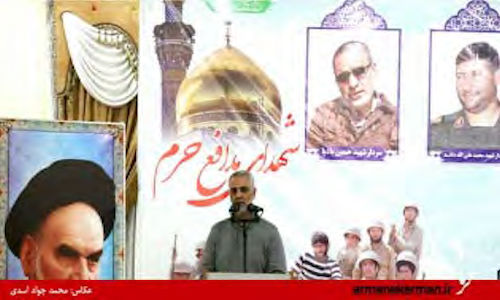
Qasem Soleimani speaks to Iran-Iraq War veterans and the families of fighters who were killed (Tashohada.ir, July 17, 2015)
Soleimani’s public statements often parrot Iran’s official propaganda line and should be regarded as based on expectations and wishful thinking rather than fact. For example, in early 2015 he stated that ISIS’s days were numbered because of the defeats it and the other radical Sunni Islamic organizations had suffered in Syria and Iraq (IRNA, February 11, 2015). A few months later the Iranian media quoted him as saying the world would be surprised “in the coming days” by developments in Syria in the wake of the collaboration between Iran and the commanders of the Syrian army (Mashregh News, June 1, 2015). The report was later denied on the claim that Soleimani did not customarily make promises about future military successes.
Coordinating Russian Involvement in Syria
In the summer of 2015 the Assad regime’s distress led its main allies, especially Russia and Iran, to intensify their involvement in the fighting in Syria. At the beginning of August 2015 Fox News reported that during a visit to Moscow Soleimani met with Russian Prime Minister Vladimir Putin. The meeting, which was denied by both Iranian and Russian sources, was held, according to American sources, to discuss military collaboration between Iran and Russia, including the provision of Russian S-300 aerial defense systems. In retrospect it would seem that the meeting focused on expanding Russian-Iranian security and political collaboration in the Syrian arena during the months before the beginning of the Russian aerial attacks in Syria.
![]()
You can find the introduction and other sections here:
- Introduction: Portrait of Qasem Soleimani, commander of the Iranian Islamic Revolutionary Guards Corps’ Qods Force
- Section 1: A short biography of Qasem Soleimani
- Section 3: Qasem Soleimani’s involvement in Iraq
- Section 4: Qasem Soleimani’s involvement in the Palestinian arena and Israel
- Section 5: Qasem Soleimani’s involvement in Lebanon
- Section 6: Qasem Soleimani’s involvement in Yemen and other Middle Eastern states
- Section 7: Qasem Soleimani’s involvement in internal Iranian politics
- Section 8: Qasem Soleimani’s public image
- Section 9: Possible lifting of international sanctions on Qasem Soleimani in the wake of the nuclear agreement
![]()
Notes:
[1] This study of Qasem Soleimani was written for the Intelligence and Terrorism Information Center (ITIC) by Dr. Raz Zimmt, a research fellow in the Alliance Center for Iranian Studies in Tel Aviv University and a research fellow at the Forum for Regional Thinking. His fields of expertise include the politics, society, foreign policy and social networks in the Islamic Republic. The study was coordinated with ITIC research fellows and includes information previously appearing in ITIC publications about the Qods Force.
[4] For further information about the involvement of Hezbollah in the fighting at al-Qusayr and its losses, see the bulletin, “Hezbollah Operatives Killed in Syria — Update.”
[5] The officer may have been Hossein Hamedani, the senior IRGC military advisor killed on October 8, 2015, in the region of Aleppo.



 RSS
RSS


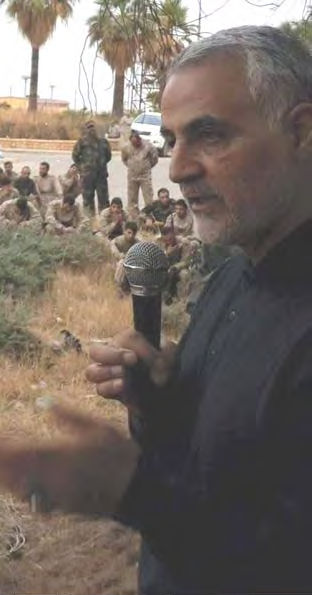
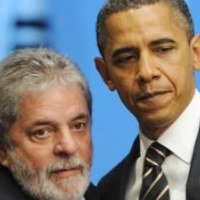
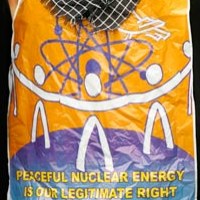

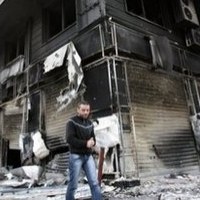
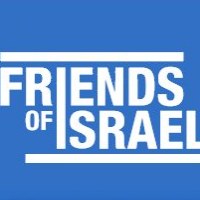




Latest Comments
... [Trackback] [...] Read More: crethiplethi.com/contact-form/trackback/ [...]...
Hello Mike, Thank you for your positive feedback to the article. I felt there wasn’t too much critical analysis of ...
Thanks for this considered and well constructed article. A follow up article on the manner in which the editorial contro...
THE CLUELESSNESS OF CLAIMING THAT OBAMA'S MIDDLE EAST POLICIES WERE A FAILURE CANNOT BE FURTHER FROM THE TRUTH, WHAT THE...
As long as Obama is the president of the usa do not trust the us government......